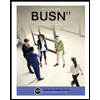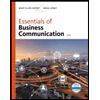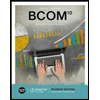FTT111 week 2 jkjk
.docx
keyboard_arrow_up
School
Sonoran Desert School *
*We aren’t endorsed by this school
Course
111
Subject
Business
Date
Jul 2, 2024
Type
docx
Pages
5
Uploaded by MateElectron14415
Jeremy Kelley
FTT111 Firearms Inspection and Troubleshooting
FTT 111
WEEK 2
TROUBLESHOOTING SCENARIOS Purpose:
This assignment is designed to help you contextualize the overarching concepts discussed in the course text by cross-referencing them to examples of existing firearms. As you progress through the assignment, you’ll also progress through the thought-process of diagnosing and repairing malfunctions, as well as predicting the need for certain preventative maintenance. Troubleshooting is a process of asking or investigating, and answering, a series of increasingly detailed questions to eliminate possible causes of a malfunction. This worksheet will “walk you through” the investigation required to troubleshoot a firearm. As you move on to more advanced concepts in later weeks, you will begin generating and predicting the questions you need to answer to diagnose a malfunction.
Instructions:
Read each situational description below and answer the questions in the space provided. Part 1.
Customer brings you an H&R Ultra chambered in .223. He says he has had the rifle many years, and recently it has stopped ejecting the casings after he fires it. Safety:
1.
How would you safely clear the feed source, chamber, and barrel of ammunition and potential
obstructions? Start by pointing in a safe direction. Then I'd have used the release of the magazine to take it out. Then I'd take the gun and rotate it in order to visually or physically confirm that this chamber was free of obstructions. To remove the case, I would use tools such as nose pliers or picks.
2.
In addition to clearing the firearm of ammunition and obstructions, is there any other serious damage that you might inspect for prior to moving forward with the troubleshooting process? I would inspect the ejector/extractor looking for damage like wear and tea
Initial Inspection and Diagnosis:
1.
What action type is the firearm in question?
Break-action
2.
What is the most likely
type of failure (failure to fire, failure to feed, etc.) the customer is describing? If more than one type of failure is equally likely, list them below.
Failure to eject
3.
What test(s) might you perform to verify the customer’s complaint? Why would you choose this method over others?
I would use snap cap to run the action and see if I am able to get the round to eject.
4.
How might the various tests you could perform yield different results in this situation? with failure to eject I would say all tests would come out the same.
Detailed Assessment:
1.
What do you feel would be the leading issue causing this platform to experience the type of failure you identified (i.e. breakage, wear, debris)? Why do you feel this way?
either a worn ejector spring or a damaged ejector spring since this is how the firearm would eject
2.
If a component were damaged, what component would be most suspect? Why?
Ejector spring since the ejector is used to extract the round
Post-inspection and repairs
1.
Assuming the auto eject assembly was the cause of the malfunction, in a short customer summary, describe the type of failure, what components caused the malfunction, the components you removed/replaced, and the tests that were performed to verify operation:
The autoeject mechanism prevented the spent casing from ejecting on its own when breaking the action, resulting in the shell being stuck in the chamber. We replaced the worn assembly and the broken spring. I used snap caps to rotate the action several times after reinstalling the new component in order to make sure that the shells were discharged as intended.
2.
List any additional resources you used for research, in the following format: Last name, first name (of author). “Title of Resource”. Publishing organization or name of website. Publication date and or access date, if available. URL. SDI text book Part 2.
Customer brings you a Ruger American that she claims, “isn’t loading properly”. Upon further questioning, you discover that she has no problem loading ammunition into the magazine, but that when she closes the bolt, it doesn’t always grab the next round. The customer has only used one brand of ammunition that she can recall.
Safety:
1.
How would you safely remove/clear the magazine, chamber, and barrel of ammunition and potential obstructions? Then I'd have used the release of the magazine to take it out. Then I'd take the gun and rotate it in order to visually or physically confirm that this chamber was free of obstructions. To remove the case, I would use tools such as nose pliers or picks.
Initial Inspection and Diagnosis:
1.
What action type is the firearm in question?
Bolt-action
2.
Is the malfunction likely
to be related to operator-error or faulty ammunition? Explain your answer.
It might depending on the magazine being seated correctly
3.
What test(s) might you perform to verify the customer’s complaint? Why would you choose this method over others?
I would try to see if i can seat the magazine, I would then try new magazines to see if it was a over used magazine.
Detailed Assessment:
1.
Through to your own research, can you find evidence that a failure to feed malfunction is common in Ruger American rifles? If so, what is usually the cause and how might you properly
address these issues? No evidence of failure to feed is common
2.
Assume that the component you originally suspected was not the culprit of the failure, what other component(s) might you suspect and why?
I'd check to see if there's any damage, debris, or just a failure to install correctly, the magazine catch and the latch.
Post-inspection and repairs
1.
Assuming the magazine spring was the cause of the malfunction, in a short customer summary, describe the type of failure, what components caused the malfunction, the components you removed/replaced, and the tests that were performed to verify operation:
The bullet wasn't raised enough to catch the bolt, because of a defective magazine spring. That's
going to make it impossible to feed. I used snap caps to cycle through the magazine after installing my spring. Magazine no longer failing to feed.
2.
List any additional resources you used for research, in the following format: Last name, first name (of author). “Title of Resource”. Publishing organization or name of website. Publication date and or access date, if available. URL.
SDI text book
Part 3.
Your preview ends here
Eager to read complete document? Join bartleby learn and gain access to the full version
- Access to all documents
- Unlimited textbook solutions
- 24/7 expert homework help
Related Questions
Case STUDY ANALYSIS
CREATION OF A NEW PROJECT
Our Head of quality (that we will call Mr L.) suggested that the company needed to improve the planning and scheduling of the machining and tooling department.
All companies that have machine production do this, and we already had someone scheduling this department (Mr M.), but we needed someone that could do it much more in detail and ahead of time.
Eventually, the supervisor of the machining department(Mr S.) was elected to be the best person for this job, so the CEO of the company decided that Mr M. had to train Mr S. and explain the method he followed for the planning.
Mr M. is known to be someone that likes to work the way he wants to work! In other words, he is not known for being someone that listens to other people’s opinion, so Mr S. (much younger) had some difficulty getting information out of Mr M.
This problem had been planned. In fact, before this project started there had been at least two separate meetings, one together with…
arrow_forward
Questions
1. Was Joseph right in expecting Henry to check the work of his department? Why?
2. How did the situation between Joseph and Henry develop?
3. What could Praveen have done to prevent or correct this situation?
4. How do you think Praveen would handle the problem now?
5. What kind of human relations approach should Praveen take to rectify and prevent such problems
arrow_forward
While it might not match "emergency' in a traditional definition, the current opioid crisis in America has been a slowly unfolding (and changing) emergency for almost two decades. As part of trying to address a community in need, the NYC mobile methadone clinic started as a way to offer people in need additional options. As part of emergency preparedness, public health managers should be engaging in contingency planning as part of their management function.
Question:
Pick any two of the three below and briefly detail how they are being exemplified in the provided case study. How is the management function of Controlling being utilized overall in this case study?
Risk analysis
Mitigate potential risks
Identify preparedness action
https://nextcity.org/urbanist-news/new-york-city-pilots-mobile-methadone-program-to-help-treat-addiction
arrow_forward
Article:
Harry Hartfield was looking over some recent travel brochures while consulting his recent Google search. Retirement is only 5 days away and he could not wait to see the Fiji Islands. He and his wife thought they would start with a restful break before they started their travels in earnest. Harry is the head aero engineer at Global Delivery Direct and has been in charge of purchasing the planes and maintenance for the last 15 years after being an employee with GDD 25 years before. Harry had worked up in the company to his current position and has seen a lot of initiatives come and go when it came to eco-friendly flying machines. In the last four weeks, Harry has been breaking in his replacement, Imogine Farthing, who is coming from their London branch. Harry likes Imogine and thinks that she will do well. However, she is keen to purchase the new Boeing 777 cargo plane. She thinks it will go a long way to improving their fuel consumption and air emissions in the long-run…
arrow_forward
Article:
Harry Hartfield was looking over some recent travel brochures while consulting his recent Google search. Retirement is only 5 days away and he could not wait to see the Fiji Islands. He and his wife thought they would start with a restful break before they started their travels in earnest. Harry is the head aero engineer at Global Delivery Direct and has been in charge of purchasing the planes and maintenance for the last 15 years after being an employee with GDD 25 years before. Harry had worked up in the company to his current position and has seen a lot of initiatives come and go when it came to eco-friendly flying machines. In the last four weeks, Harry has been breaking in his replacement, Imogine Farthing, who is coming from their London branch. Harry likes Imogine and thinks that she will do well. However, she is keen to purchase the new Boeing 777 cargo plane. She thinks it will go a long way to improving their fuel consumption and air emissions in the long-run…
arrow_forward
BUS 2020
Assignment #3
Page 190, Chapter 7:
7-9 What are three innovative ways you could optimize your
college’s website for mobile devices?
7-10 If you wanted to get your employees’ attention about
the need to reduce costs without starting up the rumor mill about the
possibility of layoffs, would it be wise to send out an email with the subject
line “To save everyone’s job, we must reduce costs now� Explain your answer
7-11 Should you ever use emoticons in business email
messages? Explain your answer
7-12 Communication on a major project is suffering because
several team members are in the habit of writing cryptic or careless instant
messages that often force recipients to engage in several rounds of follow-up
messaging to figure out what the sender had in mind As project leader, you’ve
spoken with these team members about the need to write clearer messages, but
they respond that…
arrow_forward
4. (Scenario Based Question) Your response to Dolly's Phone Call & "Hello love, my
name is Dolly Parsons and I am having problems looking at my account details on this
Monzo button app thing on my mobile telephone handset. I really need access to my
pension so I can go shopping for groceries. Gosh I really miss the days of visiting a
bank and speaking to a person and drawing out my money. (**anxious**) Please help
me, I have been trying for 30 mins and I can't open it up and the shops will be closing
soon. My grandson has set me up an email address on my new computer, which I
have written down - dollyparson45@gmail.co.uk Please help me!"
(Write your response to the customer as if you were a COp at Monzo who had just
picked up a call from Dolly, for example "Hi Dolly...")
See all of the information you need to write your answer to this question here
arrow_forward
Argumentative Analysis Outline Template Assignment Topic :Can robots replace humans in the workplace
arrow_forward
Q2 Please help with correct answers in details: Step by step. Last submission got incorrect answers.
Due to population growth in the area, the new Liberty High School has just opened in a local school district. The athletic director at Liberty High is planning the launch of the school's track and field team. The first team practice is scheduled for April 1. The activities, their immediate predecessors, and the activity time estimates (in weeks) are listed in the following table.
Time (Weeks)
Activity
Description
ImmediatePredecessor
Optimistic
Most Probable
Pessimistic
A
Meet with board
1
1
2
B
Hire coaches
A
4
6
8
C
Conduct fundraiser
A
2
4
6
D
Announce program
B, C
1
2
3
E
Meet with coaches
B
2
3
4
F
Order team equipment
A
1
2
3
G
Register athletes
D
1
2
3
H
Reserve buses for meets
G
1
2
3
I
Plan first practice
E, H, F
1
1
1
Develop an activity schedule. (Round your answers to two decimal places.)
Activity
EarliestStart
LatestStart…
arrow_forward
9:01 PM
9יוה וi"
Group Work.pdf
UNIVERSITY OF PROFESSIONAL STUDIES, ACCRA (UPSA)
主
DIPLOMA PROGRAMME
LEVEL 100
PDBA 117: BUSINESS COMMUNICATION
2021 ACADEMIC YEAR, FIRST SEMESTER
GROUP WORK
QUESTION
You are the Managing Director of MediConsult, a medical supplies company, located at Tema.
Due to the COVID-19 pandemic, your regular import of supplies has been cut by half. As a result,
you are unable to meet the demands of most of your clients. Write a letter to the Procurement
Director of Abala Hospital, Spintex Road, to inform her of your inability to supply her company's
request for face masks.
INSTRUCTIONS
1. All letters should come on a letter head
2. Use a standard business letter format
3. Use a fully-blocked layout
4. Final submissions should be in a pdf format.
5. Submissions should be via UPSA Virtual only
6. Clearly state the following on the cover page:
a. your class (Example: Public Relations Group 1)
b. your group (Example: Group 10)
c. names and index numbers of all group…
arrow_forward
Scenario: Suppose you are the manager of a consulting firm that designs and produces custom software solutions for your clients. To accomplish these tasks you supervise a staff of 100 programmer/analysts. For reasons dictated by the needs of your clients, and by the nature of your business, you offer and sell two separate services, technical design specifications (a document describing how best to solve a client’s problem) and actual implementations (in the form of hardware and software)
Staff Members
Assigned to Design Projects
Staff Members
Assigned to Implementation Projects
Design Projects Completed
Implementation Projects Completed
0
100
0
15
25
75
20
14
50
50
35
12
75
25
45
7
100
0
50
0
In the following graph, plot the productions possibilities for the consulting firm :
Questions concerning the scenario described on previous page.
a) What happens to the curve if the programmer/analyst union bargains for reduced…
arrow_forward
Subpart 2. What could Brenda done to avoid this incident?
arrow_forward
Academic Dishonesty includes which three of the following (choose three):
Question 10 options:
a)
Purchasing someone else's research or writing and turning it in as one's own
b)
Turning in work that has already been turned in for another instructor without getting permission first
c)
Looking at Wikipedia
d)
Failing to accurately cite sources for statistics, numbers, charts, and /or pictures
e)
Turning in a two page essay when the assignment directions clearly call for three pages
f)
Including the original author's name in a sentence rather than in the parenthetical citation
g)
Summarizing information
arrow_forward
Two senior managers (Brad and Dave) at Alpine Inc. are disagreeing about the managerial skills needed by the person who will be chosen to lead the company's next product development project. Brad argues that the person needs strong technical skills and substantial knowledge about the latest technology relevant for the project, but Dave says that the person must first and foremost have strong conceptual skills in order to effectively manage the project. The statement that weakens Brad's argument is:
Question 20 options:
A)
The existing product development manager with the strongest conceptual skills in the company also has the weakest technical skills.
B)
The project is complex and has unusual requirements.
C)
The existing product development manager with the weakest technical skills also has the weakest human relations skills.
D)
The project is very large and…
arrow_forward
solve this i want now before 11 clock
arrow_forward
4a) Total quality management is a top-down program
True/ False
4b) The qualifications of a competent project manager are: technical expertise, related
project experience, business capability, leadership ability, people skills and
appropriate educational degree.
True/ False
4c) A good method to ensure client satisfaction is to develop criteria and a related
measurement program and periodic report that show the contractor's performance
against the criteria.
True/ False
4d) Some of the elements for an effective team-building program are: project
commitment, cost and schedule consciousness, and working togetherness
True/ False
Make sure you solve all question, I need only answers. If you are going to solve please left this question. I need all answers.... **
arrow_forward
Mr X, head of the accounting department, conducted a meeting with a system professional, Miss Tiffany, to develop a new accounting information system. During this meeting, Miss Tiffany suggested that the best way to start is first to examine the old system, such as reviewing key documents and observing the workers perform their tasks. Then, it can be determined which aspects are working well and which should be preserved.
Mr X disagrees with this suggestion. He argues that they have been through these types of projects before and what always ends up happening is that they do not get the new system they are promised; instead they get a modified version of the old system.
Miss Tiffany assures him that it will not happen this time. Tiffany is of the view that she just wants a thorough understanding of what is working well and what is not.
However, Mr X does not agree with this opinion. His stance is as follows:
“I would feel more comfortable if we first started with a list of our…
arrow_forward
You are to read the case study as they appear in your text (See below) Question 1. What management, organization, and technology factors were responsible for McAfee’s software problem? Question 2. What was the business impact of this software problem, both for McAfee and for its customers? Question 3. If you were a McAfee enterprise customer, would you consider McAfee’s response to the problem be acceptable? Why or why not? Question 4. What should McAfee do in the future to avoid similar problems? WHEN ANTIVIRUS SOFTWARE CRIPPLES YOUR COMPUTERS: McAfee is a prominent antivirus software and computer security company based in Santa Clara, California. Its popular VirusScan product (now named AntiVirus Plus) is used by companies and individual consumers across the world, driving its revenues of $1.93 billion in 2009. A truly global company, McAfee has over 6,000 employees across North America, Europe, and Asia. VirusScan and other McAfee security products address endpoint…
arrow_forward
I need help with this question 7
arrow_forward
Homework help starts here!
ASK AN EXPERT
CHAT
MATH SOLVER
Question
Question
A business is launching a new product. The launch will require a number of related activities as follows - hire a sales manager (5 weeks), require the sales manager to recruit sales people (4 weeks), train the sales people (7 weeks), select an advertising agency (2 weeks), plan an advertising campaign with the agency (4 weeks), conduct the advertising campaign (10 weeks), design the packaging of the product (4 weeks), set up packing operation (12 weeks), pack enough products for the launch stock (8 weeks), order the launch quantity of products from the manufacturer (13 weeks), select distributors for the product (9 weeks), take initial orders from the distributors (3 weeks), dispatch the initial orders to the distributors (2 weeks). (a) If the sales manager cannot be hired for 3 weeks, how will that affect the total project? (b) If the whole project launch operation is to be…
arrow_forward
(Question 23) As a process analyst – you are requested to – Map the above project(refer to case study attached) to the Business Process Management lifecycle, briefly explain what you will be doing at each of the following phases.
Please note you are NOT requested to define each phase. Fullmark’s will be allocated when the answers relate to the application of the scenario in the case study.
Process Identification
Phase
Details description of what you will be doing, how it will be done and why.
a)
Process Identification
b) Process discovery
c) Process analysis
d) Process Redesign
e) Process implementation
f) Process monitoring and Controlling
arrow_forward
Case Background: You are a marketing manager for Sunflower Moving Company, a company that helps people move their belongings from one residence to another. As part of the company's efforts to remain competitive, a study is implemented to examine factors that drive the sales of its moving services and products.
Instructions:
In addition to offering moving services, Sunflower Moving Company also sells moving supplies such as boxes, packing supplies, tie-down ropes, covers and bags, short-term storage options, bike racks, wheelchair carriers, motorcycle towing, etc. An initial study was conducted to examine the relationship between the sales levels of Sunflower's moving supplies and the price of its products. A regression model yielded an R-Square value of 45%. Interpret this statistic. Do you think this statistic indicates that Price is a good predictor of Sales? Justify your answer.
You direct your market research team to expand the study. Besides Price, suggest 3 other predictor…
arrow_forward
Question b. is the one academic question that is being inquired about.
arrow_forward
do fast.
arrow_forward
a sample of professional biography as a legal and compliance position in event and planning business.
arrow_forward
Remaining Time: 1 hour, 55 minutes, 58 seconds.
A Question Completion Status:
1
2
3
4
6.
7.
8.
9
10
11
12
13
14
15
16
17
18
19
20
21
22
23
24
25
26
27
28
29
30
31
32
33
A Moving to another question will save this response.
Quèstion 3
«< Ques
4 points
Targeting is defined as evaluating each market segments attractiveness and selecting one or more segments to enter. List and briefly explain the four targeting strategies.
For the toolbar, press ALT+F10 (PC) or ALT+FN+F10 (Mac).
BIUS Paragraph
Arial
10pt
工%厄白 Q5d 州
x? X,
RBC V
-
田田用国 田田図
P.
O WORDS POW
A Moving to another question will save this response.
« < Ques
hp
arrow_forward
SEE MORE QUESTIONS
Recommended textbooks for you

BUSN 11 Introduction to Business Student Edition
Business
ISBN:9781337407137
Author:Kelly
Publisher:Cengage Learning

Essentials of Business Communication (MindTap Cou...
Business
ISBN:9781337386494
Author:Mary Ellen Guffey, Dana Loewy
Publisher:Cengage Learning

Accounting Information Systems (14th Edition)
Business
ISBN:9780134474021
Author:Marshall B. Romney, Paul J. Steinbart
Publisher:PEARSON


International Business: Competing in the Global M...
Business
ISBN:9781259929441
Author:Charles W. L. Hill Dr, G. Tomas M. Hult
Publisher:McGraw-Hill Education

Related Questions
- Case STUDY ANALYSIS CREATION OF A NEW PROJECT Our Head of quality (that we will call Mr L.) suggested that the company needed to improve the planning and scheduling of the machining and tooling department. All companies that have machine production do this, and we already had someone scheduling this department (Mr M.), but we needed someone that could do it much more in detail and ahead of time. Eventually, the supervisor of the machining department(Mr S.) was elected to be the best person for this job, so the CEO of the company decided that Mr M. had to train Mr S. and explain the method he followed for the planning. Mr M. is known to be someone that likes to work the way he wants to work! In other words, he is not known for being someone that listens to other people’s opinion, so Mr S. (much younger) had some difficulty getting information out of Mr M. This problem had been planned. In fact, before this project started there had been at least two separate meetings, one together with…arrow_forwardQuestions 1. Was Joseph right in expecting Henry to check the work of his department? Why? 2. How did the situation between Joseph and Henry develop? 3. What could Praveen have done to prevent or correct this situation? 4. How do you think Praveen would handle the problem now? 5. What kind of human relations approach should Praveen take to rectify and prevent such problemsarrow_forwardWhile it might not match "emergency' in a traditional definition, the current opioid crisis in America has been a slowly unfolding (and changing) emergency for almost two decades. As part of trying to address a community in need, the NYC mobile methadone clinic started as a way to offer people in need additional options. As part of emergency preparedness, public health managers should be engaging in contingency planning as part of their management function. Question: Pick any two of the three below and briefly detail how they are being exemplified in the provided case study. How is the management function of Controlling being utilized overall in this case study? Risk analysis Mitigate potential risks Identify preparedness action https://nextcity.org/urbanist-news/new-york-city-pilots-mobile-methadone-program-to-help-treat-addictionarrow_forward
- Article: Harry Hartfield was looking over some recent travel brochures while consulting his recent Google search. Retirement is only 5 days away and he could not wait to see the Fiji Islands. He and his wife thought they would start with a restful break before they started their travels in earnest. Harry is the head aero engineer at Global Delivery Direct and has been in charge of purchasing the planes and maintenance for the last 15 years after being an employee with GDD 25 years before. Harry had worked up in the company to his current position and has seen a lot of initiatives come and go when it came to eco-friendly flying machines. In the last four weeks, Harry has been breaking in his replacement, Imogine Farthing, who is coming from their London branch. Harry likes Imogine and thinks that she will do well. However, she is keen to purchase the new Boeing 777 cargo plane. She thinks it will go a long way to improving their fuel consumption and air emissions in the long-run…arrow_forwardArticle: Harry Hartfield was looking over some recent travel brochures while consulting his recent Google search. Retirement is only 5 days away and he could not wait to see the Fiji Islands. He and his wife thought they would start with a restful break before they started their travels in earnest. Harry is the head aero engineer at Global Delivery Direct and has been in charge of purchasing the planes and maintenance for the last 15 years after being an employee with GDD 25 years before. Harry had worked up in the company to his current position and has seen a lot of initiatives come and go when it came to eco-friendly flying machines. In the last four weeks, Harry has been breaking in his replacement, Imogine Farthing, who is coming from their London branch. Harry likes Imogine and thinks that she will do well. However, she is keen to purchase the new Boeing 777 cargo plane. She thinks it will go a long way to improving their fuel consumption and air emissions in the long-run…arrow_forwardBUS 2020 Assignment #3 Page 190, Chapter 7: 7-9 What are three innovative ways you could optimize your college’s website for mobile devices? 7-10 If you wanted to get your employees’ attention about the need to reduce costs without starting up the rumor mill about the possibility of layoffs, would it be wise to send out an email with the subject line “To save everyone’s job, we must reduce costs nowâ€? Explain your answer 7-11 Should you ever use emoticons in business email messages? Explain your answer 7-12 Communication on a major project is suffering because several team members are in the habit of writing cryptic or careless instant messages that often force recipients to engage in several rounds of follow-up messaging to figure out what the sender had in mind As project leader, you’ve spoken with these team members about the need to write clearer messages, but they respond that…arrow_forward
- 4. (Scenario Based Question) Your response to Dolly's Phone Call & "Hello love, my name is Dolly Parsons and I am having problems looking at my account details on this Monzo button app thing on my mobile telephone handset. I really need access to my pension so I can go shopping for groceries. Gosh I really miss the days of visiting a bank and speaking to a person and drawing out my money. (**anxious**) Please help me, I have been trying for 30 mins and I can't open it up and the shops will be closing soon. My grandson has set me up an email address on my new computer, which I have written down - dollyparson45@gmail.co.uk Please help me!" (Write your response to the customer as if you were a COp at Monzo who had just picked up a call from Dolly, for example "Hi Dolly...") See all of the information you need to write your answer to this question herearrow_forwardArgumentative Analysis Outline Template Assignment Topic :Can robots replace humans in the workplacearrow_forwardQ2 Please help with correct answers in details: Step by step. Last submission got incorrect answers. Due to population growth in the area, the new Liberty High School has just opened in a local school district. The athletic director at Liberty High is planning the launch of the school's track and field team. The first team practice is scheduled for April 1. The activities, their immediate predecessors, and the activity time estimates (in weeks) are listed in the following table. Time (Weeks) Activity Description ImmediatePredecessor Optimistic Most Probable Pessimistic A Meet with board 1 1 2 B Hire coaches A 4 6 8 C Conduct fundraiser A 2 4 6 D Announce program B, C 1 2 3 E Meet with coaches B 2 3 4 F Order team equipment A 1 2 3 G Register athletes D 1 2 3 H Reserve buses for meets G 1 2 3 I Plan first practice E, H, F 1 1 1 Develop an activity schedule. (Round your answers to two decimal places.) Activity EarliestStart LatestStart…arrow_forward
- 9:01 PM 9יוה וi" Group Work.pdf UNIVERSITY OF PROFESSIONAL STUDIES, ACCRA (UPSA) 主 DIPLOMA PROGRAMME LEVEL 100 PDBA 117: BUSINESS COMMUNICATION 2021 ACADEMIC YEAR, FIRST SEMESTER GROUP WORK QUESTION You are the Managing Director of MediConsult, a medical supplies company, located at Tema. Due to the COVID-19 pandemic, your regular import of supplies has been cut by half. As a result, you are unable to meet the demands of most of your clients. Write a letter to the Procurement Director of Abala Hospital, Spintex Road, to inform her of your inability to supply her company's request for face masks. INSTRUCTIONS 1. All letters should come on a letter head 2. Use a standard business letter format 3. Use a fully-blocked layout 4. Final submissions should be in a pdf format. 5. Submissions should be via UPSA Virtual only 6. Clearly state the following on the cover page: a. your class (Example: Public Relations Group 1) b. your group (Example: Group 10) c. names and index numbers of all group…arrow_forwardScenario: Suppose you are the manager of a consulting firm that designs and produces custom software solutions for your clients. To accomplish these tasks you supervise a staff of 100 programmer/analysts. For reasons dictated by the needs of your clients, and by the nature of your business, you offer and sell two separate services, technical design specifications (a document describing how best to solve a client’s problem) and actual implementations (in the form of hardware and software) Staff Members Assigned to Design Projects Staff Members Assigned to Implementation Projects Design Projects Completed Implementation Projects Completed 0 100 0 15 25 75 20 14 50 50 35 12 75 25 45 7 100 0 50 0 In the following graph, plot the productions possibilities for the consulting firm : Questions concerning the scenario described on previous page. a) What happens to the curve if the programmer/analyst union bargains for reduced…arrow_forwardSubpart 2. What could Brenda done to avoid this incident?arrow_forward
arrow_back_ios
SEE MORE QUESTIONS
arrow_forward_ios
Recommended textbooks for you
 BUSN 11 Introduction to Business Student EditionBusinessISBN:9781337407137Author:KellyPublisher:Cengage Learning
BUSN 11 Introduction to Business Student EditionBusinessISBN:9781337407137Author:KellyPublisher:Cengage Learning Essentials of Business Communication (MindTap Cou...BusinessISBN:9781337386494Author:Mary Ellen Guffey, Dana LoewyPublisher:Cengage Learning
Essentials of Business Communication (MindTap Cou...BusinessISBN:9781337386494Author:Mary Ellen Guffey, Dana LoewyPublisher:Cengage Learning Accounting Information Systems (14th Edition)BusinessISBN:9780134474021Author:Marshall B. Romney, Paul J. SteinbartPublisher:PEARSON
Accounting Information Systems (14th Edition)BusinessISBN:9780134474021Author:Marshall B. Romney, Paul J. SteinbartPublisher:PEARSON
 International Business: Competing in the Global M...BusinessISBN:9781259929441Author:Charles W. L. Hill Dr, G. Tomas M. HultPublisher:McGraw-Hill Education
International Business: Competing in the Global M...BusinessISBN:9781259929441Author:Charles W. L. Hill Dr, G. Tomas M. HultPublisher:McGraw-Hill Education

BUSN 11 Introduction to Business Student Edition
Business
ISBN:9781337407137
Author:Kelly
Publisher:Cengage Learning

Essentials of Business Communication (MindTap Cou...
Business
ISBN:9781337386494
Author:Mary Ellen Guffey, Dana Loewy
Publisher:Cengage Learning

Accounting Information Systems (14th Edition)
Business
ISBN:9780134474021
Author:Marshall B. Romney, Paul J. Steinbart
Publisher:PEARSON


International Business: Competing in the Global M...
Business
ISBN:9781259929441
Author:Charles W. L. Hill Dr, G. Tomas M. Hult
Publisher:McGraw-Hill Education
